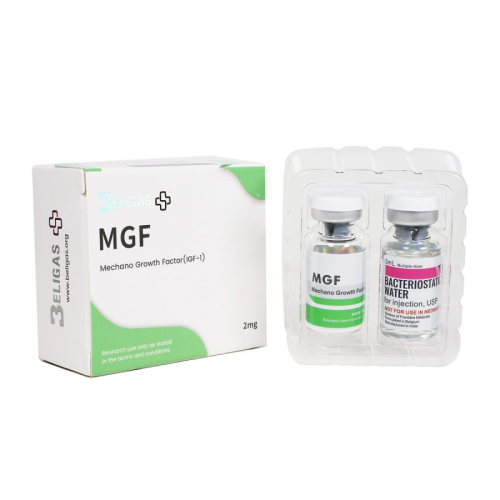ACTIVE HALF-LIFE
Several Minutes
CLASSIFICATION
Peptide Hormone
DOSAGE
500 mcg/day
ACNE
No
WATER RETENTION
No
HBR
No
HEPATOTOXICITY
No
AROMATIZATION
No
MANUFACTURER
Beligas
WAREHOUSE
International Warehouse 3
SUBSTANCE
Mechano Growth Factor
,
MGF stands for Mechano Growth Factor, a substance that might be unfamiliar to many conventional drug users. It mimics a specific molecular signal and is derived from Insulin-like Growth Factor 1 (IGF-1).
Typically, MGF is utilized by experienced practitioners aiming to enhance recovery as well as increase muscle strength, power, and mass. This factor acts as a molecular signal in the body, prompting nearby cells, referred to as "satellite cells," to migrate to the muscle and integrate into muscle cells. This process results in larger muscle cells, which can lead to a permanent increase in both size and strength capacity of muscle fibers. Consequently, it may enhance an athlete's potential even after they have ceased using it.
It’s no surprise that many individuals, such as bodybuilders and athletes, seek out the 2 mg peptide of Mechano Growth Factor. However, due to its limited therapeutic applications compared to other medications for medical conditions, it can be quite challenging to find MGF in regular pharmacies or medical facilities.
As a result, those interested in these types of substances often turn to online purchases, just like many other similar compounds used for analogous purposes. However, it is essential to understand how to incorporate MGF, or any similar product, into a regimen effectively in order to achieve the desired results. Below, we will explore common dosages, timing for administration, and potential drawbacks associated with its use.
MGF Peptide Dosage and Timing
There is a shortage of research regarding the optimal dosage of MGF for individuals looking to increase size or athletic performance. Nonetheless, larger dosages tend to yield better results than smaller ones. A frequently mentioned dosage involves administering MGF 2 mg three times a week for four weeks, often used by those aiming for athletic or structural benefits.
Timing is crucial when it comes to MGF administration, as it is typically given immediately following a workout. This is due to its short half-life, which only lasts a few minutes, meaning it is metabolized by the body quickly. Therefore, users prefer to take it right after exercising when the body is in a recovery phase, and anabolic signaling is at its peak. If immediate post-workout administration is not possible, another option is to use an esterified version, such as MGF-PEG, which has a polyethylene glycol component that lengthens its half-life to several days. This allows for a more gradual release and processing of the substance in the body, providing greater flexibility in administration timing.
This information should assist you in determining the most suitable form of MGF for your needs and lifestyle, as well as optimal usage to maximize results. Now, let’s discuss the potential side effects that should be considered before incorporating MGF into your regimen.
MGF Peptide Side Effects
Like the benefits of using this growth factor, research on the side effects linked to MGF and similar compounds, such as fragment 176-191, is quite limited, especially in relation to the previously mentioned applications.
This scarcity makes it difficult to define a comprehensive list of potential drawbacks that might affect most users. However, based on reports from past users and suppliers, some possible side effects of MGF peptide include:
Therefore, these side effects should all be taken into account before purchasing MGF peptide to help you monitor any specific concerns during use, ensuring a safe and effective experience.

